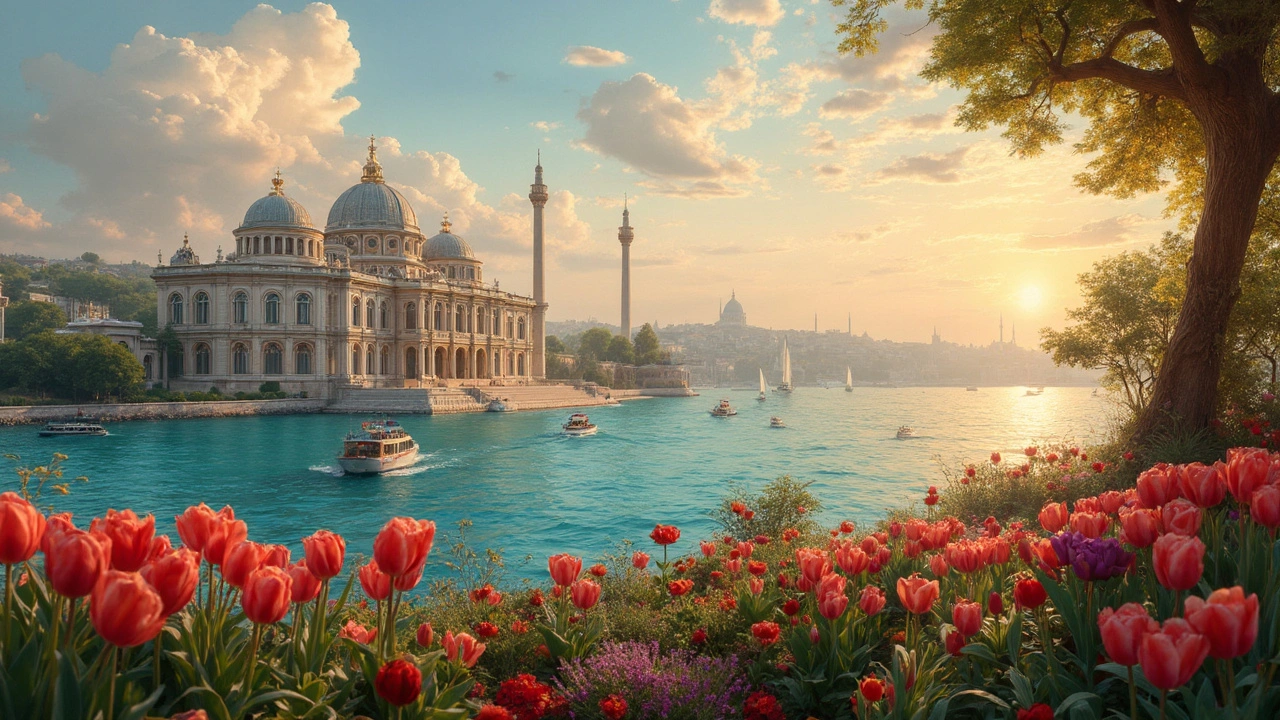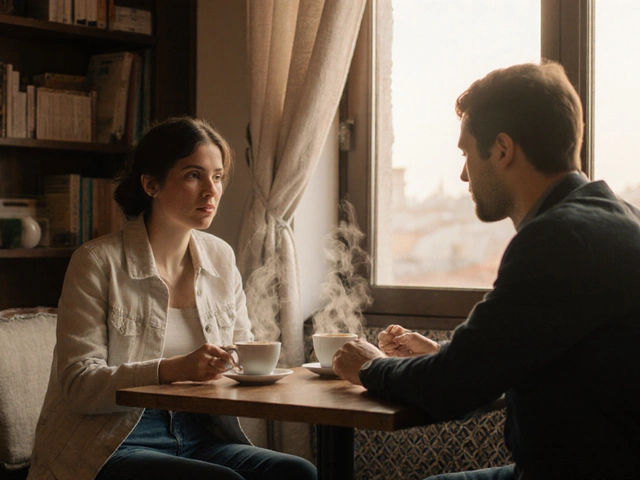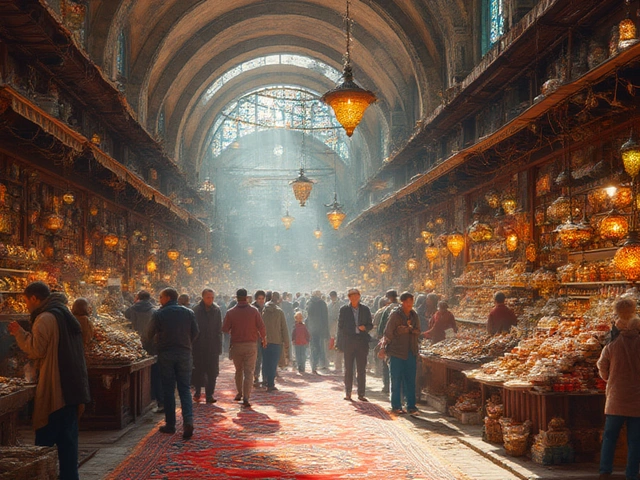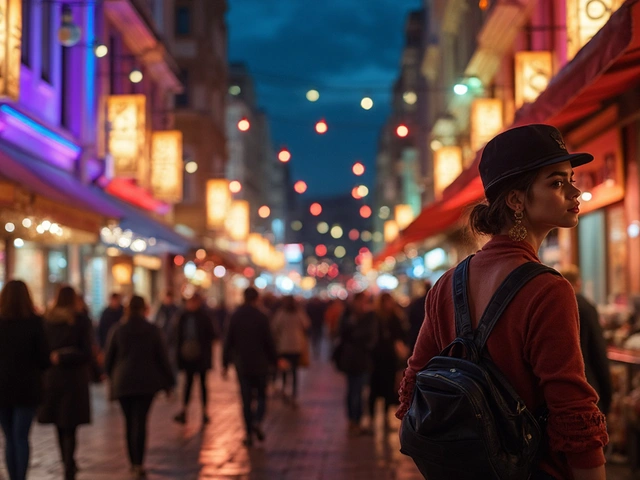Imagine stepping into a world where east meets west, right on the banks of the Bosphorus. That's the magic of Dolmabahçe Palace, a place where the opulence of Ottoman royalty intertwines with European architectural finesse. If you're a fan of grand staircases, glittering chandeliers, and stories of sultans, you're in for a treat.
Located in Istanbul, Dolmabahçe isn't just any palace—it's a testament to the cultural melting pot that the city has been for centuries. As you wander through, you'll notice how Baroque, Rococo, and Neoclassical styles mix with traditional Ottoman design, making it a unique spectacle. But why should you care about a palace half the world away?
Well, it's not just history buffs who flock here. Every corner of this palace tells a story, each piece of decor whispering tales of emperors and empires. It's like wandering through a beautifully illustrated history book, with a bit of adventure thrown in. Stick around as we delve into what makes this place tick and how you can make the most of your visit.
- Introduction to Dolmabahçe Palace
- Architectural Marvels
- Historical Significance
- Visiting Tips
- Cultural Experiences
- Frequently Asked Questions
Introduction to Dolmabahçe Palace
Nestled along the sparkling shoreline of the Bosphorus lies the magnificent Dolmabahçe Palace, a true gem of Istanbul's landmarks. Built in the 19th century, it served as the main administrative center of the Ottoman Empire from 1856 to 1922. The palace was commissioned by Sultan Abdulmejid I and took a whopping 13 years to complete. With a hefty cost reflecting that of gold’s weight, this palace was a whole new level of royal extravagance.
What makes Dolmabahçe stand out is its fusion of architectural styles. You’ll see a splendid mix of Baroque, Rococo, Neoclassical, and Ottoman elements intertwining seamlessly, thanks to architect Garabet Balyan and his sons. It's like a gallery where every room displays a different piece of art.
Not Your Average Palace
This palace boasts some mind-blowing stats, starting with its sheer size. Covering over 45,000 square meters, it features 285 rooms, 46 halls, 6 baths (or hamams), and 68 toilets. That’s some serious space! The famous Crystal Staircase, shaped like a double horseshoe, is an eye-catching marvel and a favorite photo spot for visitors.
A Dash of Culture
From the outside, you might presume it’s just a historical building, but it’s so much more. Dolmabahçe is a tapestry of cultures and eras. The palace interior houses the largest collection of Bohemian and Baccarat crystal chandeliers in the world. Imagine standing beneath the world's largest Bohemian crystal chandelier, weighing in at 4.5 tons!
Why Visit Dolmabahçe Palace?
Whether you’re a history enthusiast or just love snapping photos of stunning architecture, Dolmabahçe Palace won’t disappoint. Its rich history tied to the late Ottoman Empire, and unique architectural blend makes it a place of great cultural and historical interest. Plus, strolling through its meticulously maintained gardens offers a serene break from Istanbul's bustling city life.
If you're planning to soak up cultural attractions or just have a fondness for historical sites, add Dolmabahçe to your itinerary. It’s a place where every corner has a tale to tell from the days of the sultans to modern times—a real must-visit when exploring Turkey.
Architectural Marvels
Dolmabahçe Palace isn't just about grandeur; it's a visual feast of cultural fusion. The palace’s design brilliantly encapsulates a mix of European and Ottoman influences, making it one of Istanbul's architectural gems.
European Influence
When you first gaze at the palace, the European flare is unmistakable. The architects, Garabet Balyan and his son Nigoğayos, took inspiration from Baroque, Rococo, and Neoclassical styles. These elements are evident in the lush decorations and the majestic ceremonial halls. The palace boasts a whopping 285 rooms, and 46 halls, each more lavish than the last.
The Crystal Staircase
You can’t talk about Dolmabahçe Palace without mentioning its famous Crystal Staircase. Picture this: a staircase made of Baccarat crystal, bronze, and mahogany, forming a double horseshoe shape. It's not just a stairway but a symbol of luxury and opulence.
The Largest Bohemian Crystal Chandelier
One major draw of the palace is the chandelier in the Ceremonial Hall. Weighing in at 4.5 tons, it reigns as the largest Bohemian crystal chandelier in the world and was a gift from Queen Victoria. Imagine the play of light and color—it's an absolute marvel.
Ornate Gates and Gardens
Outside, the palace doesn't disappoint either. The gates are adorned with intricate designs, leading you to expansive gardens that mirror the splendor of the interiors. Stroll through these gardens, and you'll find a peaceful escape amidst the bustle of Istanbul.
Every nook of Dolmabahçe Palace whispers tales from the past through its walls and decor. It's a living museum, capturing the spirit of two worlds under one roof. So, when you're wandering these halls, let your imagination run wild with stories of sultans and emperors.
Historical Significance
When we talk about Dolmabahçe Palace, we're diving straight into a treasure trove of history that goes beyond its walls. Constructed in the mid-19th century, this grand residence was commissioned by Sultan Abdulmecid I. He wanted a palace that rivaled the splendor of European courts while preserving the identity of the Ottoman Empire.
One of the most interesting aspects of Dolmabahçe is its role as a symbol of the empire's transition from its traditional roots toward modernization. This wasn't just about aesthetics; it marked a significant political shift too. Over time, the palace became the administrative heart of the empire, reflecting the Sultan's desire to fit into the modern world.
It was here that the last six sultans of the Ottoman Empire ruled until the caliphate was abolished in 1924. Can you imagine the stories these walls could tell? Mustafa Kemal Atatürk, Turkey's founding father, even used this as his presidential residence.
Cultivating a link between the past and the future, Dolmabahçe embodies the complexity of Turkish history and identity. "In the grand halls of Dolmabahçe, one feels the echoes of a bygone era blending with the whispers of a modern nation," states historian John Freely.
Walking through its opulent halls, you're literally stepping into pivotal moments of history. A palace that was once the seat of an empire, today serves as a powerful symbol of the crossroads between east and west in Istanbul—a blend of cultures evident in every detail.
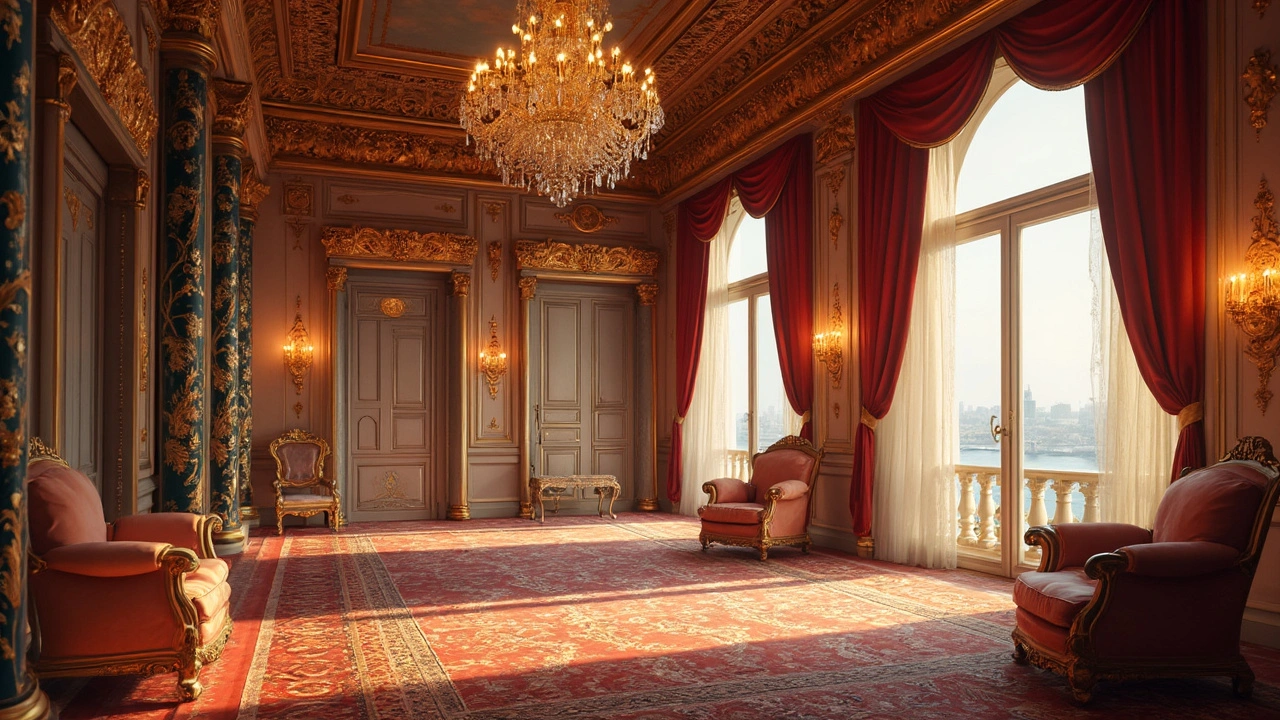
Visiting Tips
Planning a visit to the Dolmabahçe Palace? You're in for a fascinating journey. To make the most of your visit, a little planning can go a long way. Here are some tips to help you have a seamless experience!
Getting There
First things first: how do you get there? If you're in Istanbul, you can easily reach the palace by public transportation. The Kabataş tram stop is just a short walk away. If coming by ferry, aim for the Beşiktaş pier. Of course, taxis and ride-hailing services are also options, albeit pricier.
Best Time to Visit
To avoid crowds, aim for early morning on weekdays. The palace opens at 9:00 AM. If crowded spaces aren't your thing, steer clear of weekends and public holidays. And remember, the palace is closed on Mondays, so plan accordingly!
Tickets and Tours
Now, let's talk tickets. You can buy them on-site, but if you want to skip the line, booking ahead online is a smart move. Guided tours are available and highly recommended if you want to catch all the fascinating details. English-speaking guides can deepen your understanding of the history and architecture.
What to See
Inside the palace, don't miss the grand Ceremonial Hall, which boasts the world's largest Bohemian crystal chandelier. It's truly a sight to behold. The palace gardens are another must-see, offering a serene break from the bustling city outside.
Dress Code and Rules
Keep in mind that the palace has a bit of a dress code. Modest attire is appreciated, and wearing comfortable shoes is wise—you'll be walking a lot! Photography is generally allowed in the gardens, but check the rules as they sometimes change for indoor areas.
Additional Tips
- Bring water and a snack – exploring can be thirsty work, though you'll find cafes nearby.
- Consider travel insurance for peace of mind during your adventure.
- Be mindful of your belongings. Crowded places can be pickpocket hotspots.
With these tips in your back pocket, you're all set for a memorable visit to Dolmabahçe Palace. Ready to soak in the history and beauty? Enjoy your trip!
Cultural Experiences
Dolmabahçe Palace is more than just its stunning architecture; it’s a vivid tapestry of cultures coming together. Here, the crossroads of history and culture blend seamlessly, making it a rich destination for those looking to dive deep into Istanbul's diverse heritage. Whether you're snapping photos or simply soaking it all in, you'll find plenty to explore.
The Imperial Halls
Step into rooms where sultans welcomed foreign dignitaries and diplomatic ceremonies were a regular affair. Among these, the Ceremonial Hall stands out with its gigantic crystal chandelier, one of the largest in the world. Imagine the glittering balls that might have taken place here—all under this very ceiling.
The Blend of East and West
If there's any place that embodies the meeting of eastern and western influences, it's here. You’ll see traditional Ottoman elements like intricate Iznik tiles sitting comfortably alongside European luxuries such as Baccarat crystal and French carpets. This isn't just decoration; it's a reflection of a pivotal time when the Ottoman Empire looked to modernize and connect with the West.
The Sultan’s Private Collections
The palace houses impressive collections of artworks and artifacts that give us glimpses into the Ottoman elite's lifestyle. From paintings by artists like Aivazovsky to an extensive collection of porcelain, each piece tells a part of the story. And yes, the furniture and decor? Top-notch European imports, speaking volumes of the sultans' refined tastes.
Gardens and Grounds
Don’t rush past the palace's surroundings. The extensive gardens, with their geometric designs and elegant sculptures, offer a peaceful retreat from the city's bustling energy. Strolling here can evoke the same tranquility the sultans once enjoyed.
Want a pro-tip? Check if there are any cultural events or exhibitions during your visit. Occasionally, the palace hosts concerts and art events, adding an extra layer of immersion into the palace's cultural milieu.
Whether you're keen on its history or just looking for a beautiful place to wander, Dolmabahçe Palace offers an intriguing peek into the rich cultural fusion that defines Istanbul. It’s a blend of eras and ideas, waiting to be discovered by curious travelers like you.
Frequently Asked Questions
What is the best time to visit Dolmabahçe Palace?
Spring and autumn are ideal for visiting the Dolmabahçe Palace, thanks to the mild weather that makes it pleasant to stroll the beautiful gardens. Plus, you can avoid the peak summer tourist rush, making your experience more relaxed.
Is the Dolmabahçe Palace open every day?
No, the palace is generally closed on Mondays. So, plan ahead, and if you're visiting in the summer, keep an eye out for any special closures due to special state events. The palace's official website often updates any changes to visiting hours.
Are there guided tours available?
Yes, guided tours are available and highly recommended. They come in several languages, offering fascinating insights into the palace's history and architecture. As history buffs often say, "The stories behind a palace add so much more value to the visit."
Can I take photos inside the palace?
Photography is allowed only in the gardens and exterior. Inside the palace, you're expected to soak it in with your eyes, not your camera!
What are the entry fees?
Entry fees can vary slightly, but as of the most recent update, an average adult ticket costs around 300 TL. It's always wise to check the official site for the latest prices.
"Dolmabahçe Palace not only represents an architectural splendor but signifies the historical crossroads of empires." - Turkish Ministry of Culture and Tourism
Is the palace accessible for people with disabilities?
The palace has made efforts for accessibility; however, the historic nature of the building creates some limitations. It's advisable to contact the palace management for specific accessibility questions before planning your visit.
